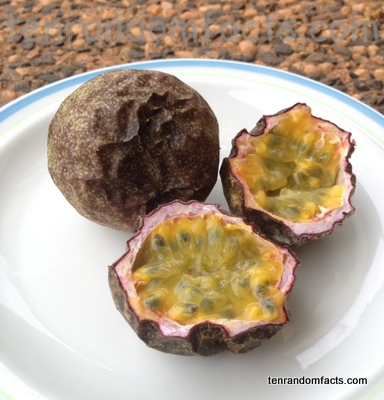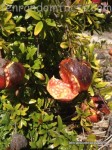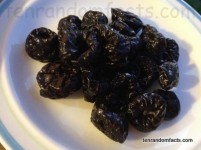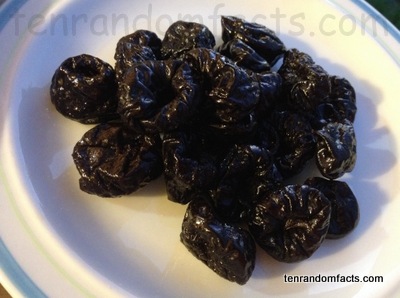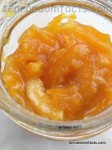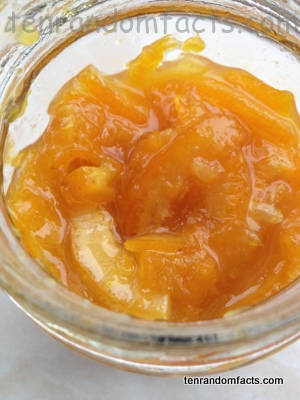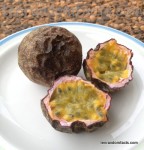
What is a fruit with passion? A passionfruit!
- Passionfruit are fruit that grow up to 4 to 7.5 centimetres (1.5 to 3 inches) in diameter, and are native to South America.
- ‘Passionfruit’ are also known as ‘passion fruit’, ‘granadilla’ and ‘purple granadilla’, and some of the varieties are ‘purple’, ‘yellow’, ‘panama’ and ‘banana’.
- Passionfruit is roughly spherical or ovoid in shape, with skin coloured purple, pink or yellow when ripe, that is either smooth, or slightly wrinkled.
- Passionfruit have yellow to orange pulp containing juice and many black edible seeds, and they generally have sweet flavoured juice and tart flavoured seeds.
- Passionfruit can be eaten raw, added to fruit salad, used as a dessert topping and flavouring, made into a variety of beverages and used as a flavouring in icing or cream for baked goods.
- Passionfruit grow on vines that have the scientific name of Passiflora edulis and are from the family Passifloraceae, a family of approximately 530 flowering plant species.
- Passionfruit are often found in home gardens grown on fences or trellises, and are commercially grown in warm climates that are frost free.
- Passionfruit, before ripening, have softer, green coloured skin, and when ripe, it is best to choose heavy fruit as they will contain more pulp and seeds.
- ‘Passionfruit’ were named by Spanish missionaries in South America as the flowers were interpreted to symbolise ‘Christ’s passion (suffering) on the cross’.
- Passionfruit are very high in vitamin C, vitamin A and dietary fibre, and also contain iron, potassium and other vitamins and minerals.
Bibliography:
Passiflora edulis, 2014, Wikipedia, http://en.wikipedia.org/wiki/Passiflora_edulis
Passionfruit, 2011, Fresh for Kids, http://www.freshforkids.com.au/fruit_pages/passionfruit/passionfruit.html
Passionfruit, 2014, Purdue Agriculture, https://www.hort.purdue.edu/newcrop/morton/passionfruit.html




